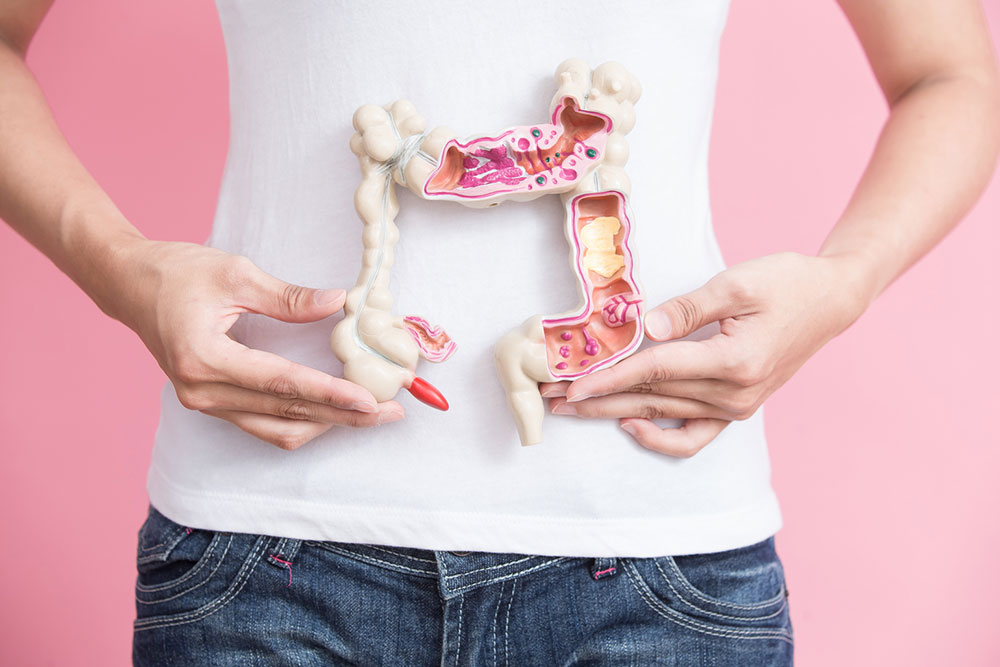9 common symptoms of colorectal cancer

Colorectal cancer is an umbrella term for cancers affecting the colon and rectum. The colon (large intestine) and rectum are vital parts of the digestive system, where the body processes food and eliminates waste matter. Colorectal cancer is generally called colon cancer and is more commonly seen in older adults. While the condition can be managed well, it must be diagnosed early. Here’s a closer look at colorectal cancer and its symptoms.
What is colorectal cancer?
When abnormal cells in the colon or rectum multiply and grow out of control, they can form a tumor. Over time, these cancer cells can also spread to other body parts if not treated, leading to complications. Colorectal cancer often begins as small growths called polyps on the inner lining of the colon or rectum. These polyps are not always cancerous and may not even trigger symptoms. However, if left untreated, the polyps may become a life-threatening tumor.
Symptoms of colorectal cancer
The following are a few symptoms of the condition that should not be ignored. Those who experience these should visit a healthcare professional for evaluation and guidance:
Changes in bowel habits
One of the most common early signs of colorectal cancer is a noticeable change in bowel habits. Individuals may experience persistent diarrhea, constipation, or alternating episodes of both. This change persists over a few weeks and is often accompanied by a feeling of incomplete excretion.
Blood in the stool
Another alarming sign is red or tarry stools that result from the presence of blood. This symptom may also arise due to other health conditions, but it should never be ignored. The expert may suggest relevant tests to determine the cause of blood in the stool.
Change in stool consistency
Colorectal cancer can lead to changes in the consistency of stools. One’s stools may become narrower or thinner due to a partial blockage in the colon. This symptom can also occur due to a benign stomach infection or food sensitivity. Nevertheless, it should be taken seriously.
Unexplained fatigue
Persistent fatigue without lifestyle changes can be a symptom of colorectal cancer. Fatigue is a common indicator of many diseases. But when unexplained, persistent, and associated with other symptoms, it should be promptly evaluated by a healthcare professional.
Abdominal discomfort
Persistent abdominal discomfort, such as cramps, pain, or a feeling of fullness, especially in the lower abdomen, can be a symptom of colorectal cancer. The discomfort may be mild at first but can progress over time. Moreover, it may not heal with home remedies.
Weakness and anemia
Anemia, characterized by a decrease in red blood cells, can result from chronic bleeding in the gastrointestinal tract. This can lead to weakness, paleness, and shortness of breath.
Unexplained bowel urges
Frequent urges to have a bowel movement, even after one has just occurred, may indicate an issue in the colon or rectum. These bowel urges can interfere with one’s performance in outdoor activities.
Nausea and vomiting
In some cases, colorectal cancer can cause nausea and vomiting, mainly if it obstructs the colon.
Unexplained pain
Pain in the abdomen or rectum that is persistent and unrelated to other known conditions should be evaluated by a healthcare provider.
It is important to note that these symptoms may vary from person to person and can also be attributed to other less severe conditions. Nevertheless, anyone experiencing one or more of these signs should consult a healthcare professional promptly, especially if they persist for a long time.
What causes colorectal cancer?
Experts say colorectal cancer develops mainly due to gene mutations in one’s colon or rectum. People with a family history of the condition are more likely to develop the disease. Certain lifestyle choices may also heighten one’s risk; for example, eating excessive red and processed meat, unhealthy eating habits, or a lack of exercise. Furthermore, the risk is high in those suffering from stomach-related conditions like chronic ulcerative colitis, Crohn’s colitis, Lynch syndrome, and familial adenomatous polyposis.
How is the condition detected and treated?
Individuals, especially those with a higher risk, should go for routine screenings even if they do not show any visible signs of colon cancer. This can help in the early detection of precancerous polyps that could turn cancerous. Screening or diagnostic tests for colorectal cancer include colonoscopy, CT scans, MRI scans, PET scans, biopsy, ultrasound, X-rays, and blood tests. If the cancer is detected, several treatments can help manage it. Some standard options include colectomy, surgery, chemotherapy, and targeted therapy.






